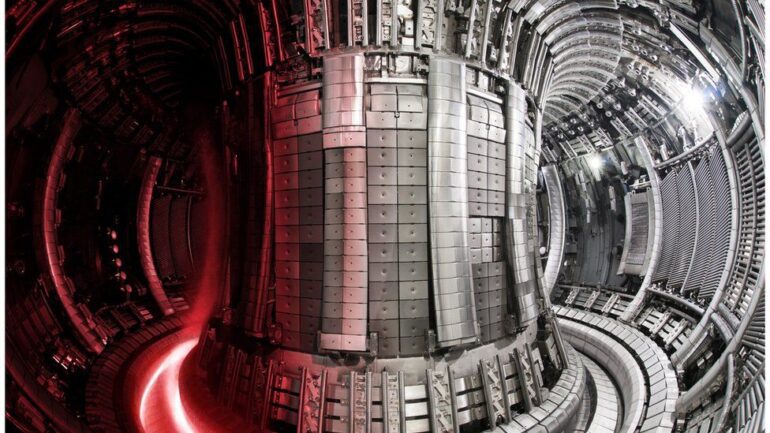TL;DR:
- Nuclear fusion holds immense promise as a clean and sustainable energy source for the future.
- Fusion reactions require overcoming electrical repulsion by heating substances to extreme temperatures.
- Magnetic fields are used in prototype fusion reactors to confine the hot plasma and prevent contact with reactor walls.
- Instabilities in hot plasma can lead to disruptions, cooling the plasma and halting the fusion reaction.
- A team of scientists developed machine learning-based software to predict and analyze plasma disruptions in real time.
- The software’s accuracy was validated using data from tokamaks, and it can also analyze physical processes driving disruptions.
- With larger datasets and advanced supercomputers, the algorithm aims for greater sensitivity and accuracy.
- Implementing this technology in current and future fusion reactors could pave the way for stable energy production.
Main AI News:
Nuclear fusion stands as a beacon of hope for the world’s energy needs, promising a clean and sustainable future. The concept is simple yet profound – the fusion of two light atomic nuclei into another, with a slightly lesser mass, liberates a tremendous amount of energy, as per Einstein’s iconic formula E = mc^2.
However, the path to harnessing this energy is riddled with challenges. One of the primary obstacles lies in the positively charged nuclei repelling each other, necessitating an incredibly high velocity for successful fusion. Achieving this demands elevating the substance to unimaginable temperatures, in the range of tens of millions of degrees Kelvin.
To contain the intense heat, fusion reactors employ a magnetic field that confines the scorching plasma, ensuring it does not interact with the reactor’s walls. Yet, a nagging issue persists – the emergence of instabilities in the hot plasma that may cause it to breach the “magnetic container” and collide with the reactor walls, causing damage and terminating the fusion reaction.
Enter an innovative solution developed by a collaboration of American and British scientists, spearheaded by the esteemed William Tang of Princeton University. The researchers have crafted a cutting-edge machine learning-based software capable of predicting and analyzing plasma disruptions in real-time.
Their pioneering work drew upon an extensive dataset from the British JET facility and the American DIII-D machine – both tokamaks, where the plasma takes on the form of a donut. By meticulously training the software with data from these reactors, it acquires the ability to anticipate disruptive events. These predictions are then rigorously validated using real-world data beyond the training set.
But the brilliance of their approach doesn’t end there. The team went the extra mile and ensured their software also comprehended the underlying physical processes driving these disruptions. This crucial aspect allows real fusion reactors to not only detect but also take prompt preventive actions by adjusting plasma parameters within milliseconds.
Looking ahead, the researchers have ambitious plans to further refine their algorithm. Armed with more extensive datasets and state-of-the-art supercomputers from institutions like Oak Ridge National Laboratory, Lawrence Berkeley National Laboratory, and Argonne National Laboratory, the team aims to bolster the software’s sensitivity to plasma processes, enabling even more accurate predictions and responses to impending disruptions.
The ultimate goal is to implement this groundbreaking software on existing prototype tokamaks, including those involved in the study, as well as future colossal machines like ITER, currently under construction in France. By achieving this milestone, the dream of stable energy production from fusion reactions may well become a reality sooner than anticipated.
Conclusion:
The integration of machine learning into fusion reactors is a game-changer for the energy market. This technological breakthrough enhances our ability to harness the immense potential of nuclear fusion, offering a cleaner and more sustainable energy alternative. As this software matures and finds its way into practical applications, it could usher in a new era of reliable and environmentally friendly power generation, creating opportunities for market players to invest in and capitalize on this transformative industry. Businesses that align their strategies with this emerging technology could gain a competitive advantage and contribute to shaping the future of the energy landscape.

